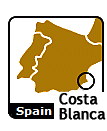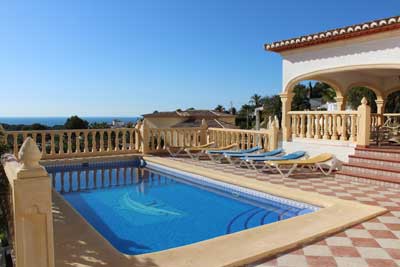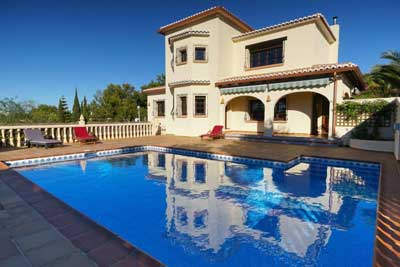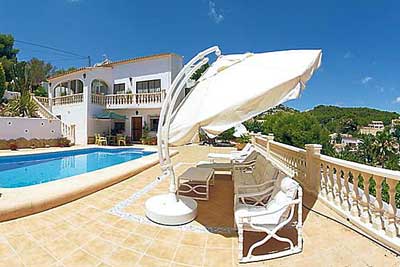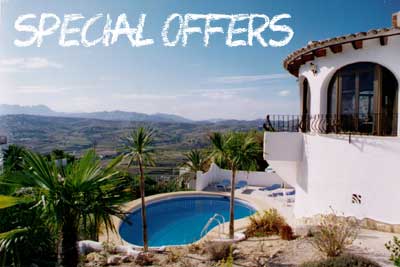Villas to rent Spain
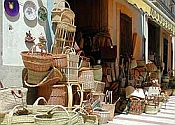
Gata DE GORGOS
Gata de GorgosSituated at the crossroads with the N-332 and the regional roads leading to Jávea and Denia is the village of Gata de Gorgos which owes its name to the Gorgos River (also called the Jalon) which winds its way through the village before reaching Jávea. The crossroads mark the border between the inland and coastal areas of the Marina Alta and the village is approximately 83 kilometres from Alicante and 45 from Benidorm.Gata de Gorgos describes itself as LÁrtesania because of the traditional craft work which has made this village famous for the production of goods made from esparto grasses, wicker and palm. The origin for it being known as the Bazaar of the Costa Blanca lies in the manner of how these works are sold and displayed. Certainly for the visitor there is a wealth of goods to chose from, baskets, furniture, hats all made from local materials. The streets are dominated by the craft shops and often the wares spill out into the main street, making a very picturesque sight and sometimes, to the surprise and delight of the visitor, even the main highways display the colourful work. Such is the abundance of the produce that there are over 50 shops.
These craft works have been established for over many centuries and they play an important part in supporting the town’s economy and it is fascinating to watch the craftsman at work producing their hand made goods. At the end of September during the Festival of San Miguel there is an artisan fair which attracts hundreds of visitors each year. Another industry supporting the economy is the production of guitars and ceramic works. However, agriculture also plays an important part in providing jobs for the townspeople because it is here in Gata de Gorgos that the Moscatel grapes are grown, which after harvesting receive the traditional treatment for the production of the famous raisins. Dating from Muslim times the process is so elaborate that it has now become a ceremony, and it is this area of the towns economy that provides its main culture.
On the left side of the River Gorgos there is a park with many routes to walk and scenery to enjoy. Also visit the Museums telling of the history and heritage of the town which became an independent municipality from Denia in 1535, the same year that the Church of Saint Michael the Archangel was completed. Also worth visiting is the Hermitage of the Santisimo Christ (Christ of the Calvary). Statues and monuments are abound in this town whose history runs along parallel lines with other towns and villages in the area and which started from just a few farmhouses owned by the King. The town has from time to time been under Moorish rule and then when they were expelled under the rule of the King. Possibly the town’s darkest hour was the forceful baptism of the Muslims which led to their expulsion and exodus from the town.
The town’s fiestas take place during June, with the Bonfires of San Juan. In August the fiesta is to honour The Christ of the Calvary and St Michael’s celebrations are at the end of September. If you wanted to find just one word to describe a visit to this most unusual town it would have to be ‘enriching’ as this would describe it perfectly. The beauty of its landscapes, its unusual white houses with ivory lintels, the gastronomy, the artisans and the warm and welcoming of the people make Gata de Gorgos a haven for those wanting to see and enjoy something different.
Check our up-to-date Villa Availability page.

